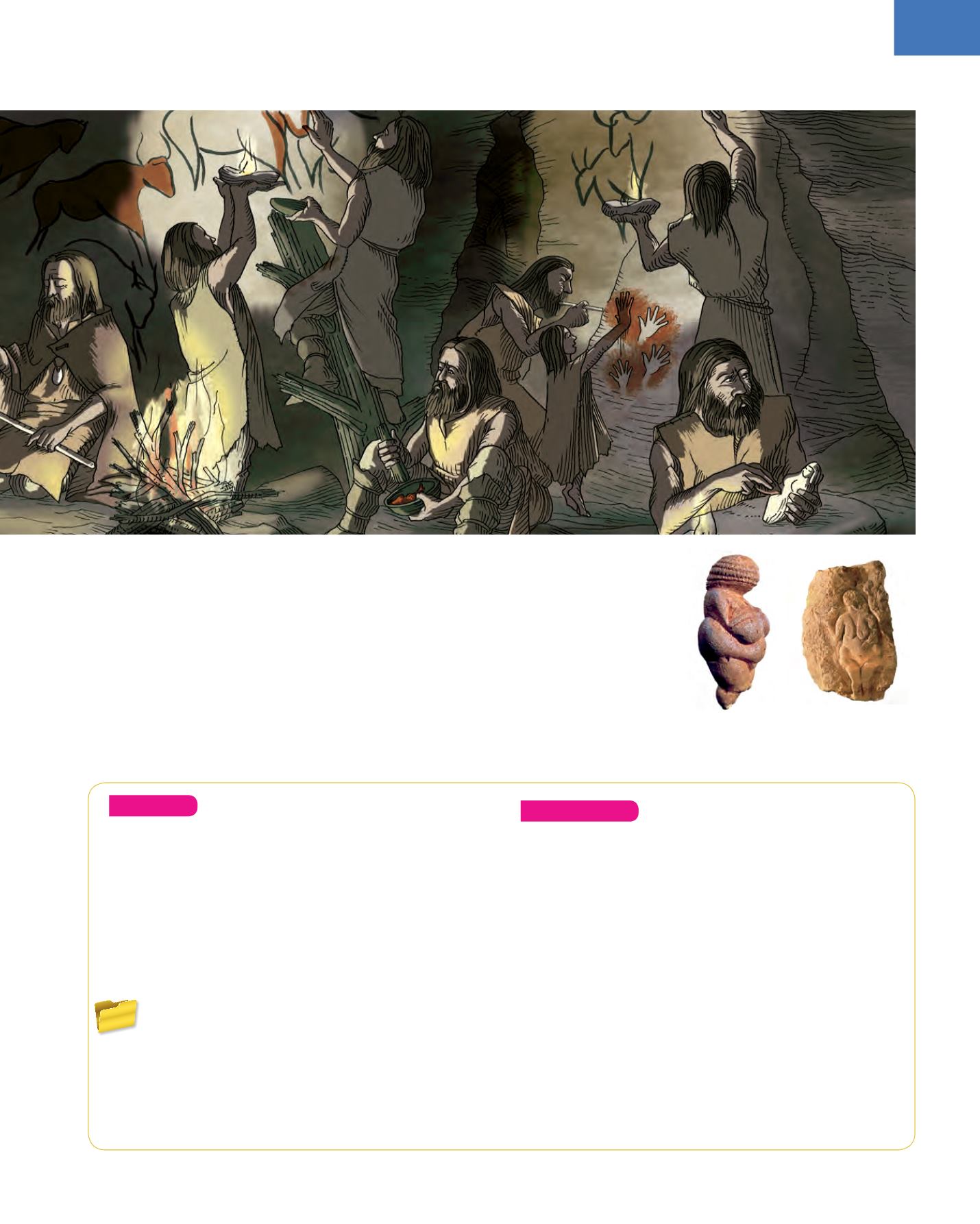
1
1. Prehistory: the Paleolithic Period
19
Portable
art (which could be carried from one place to another) consists of:
❚
Engravings
on pieces of stone or bone. The engravings were drawings done on a
hard surface by making incisions with an even harder tool.
❚
Figurines
(small statues) of human figures or animals. They were made of stone,
wood, bone and ivory. Some of them are associated with fertility worship, such
as the female statues called Venus.
❚
Other objects
, like
adornments
,
batons of command
(which gave authority
or power to their owner),
amulets
(objects which protected people from evil and
brought good luck) and
talismans
(objects which were believed to have magical
powers).
Figurine of the Venus of Willendorf
(left) and engraving of the Venus of
Laussel
Understand
27.
Answer the following questions.
a)
Why is it thought that the Neanderthals held
religious beliefs?
b)
Why did prehistoric human beings practise magic
rituals?
28.
State which object a man or woman at that time
would have used to achieve the following.
a)
Show who held authority.
b)
Bring back the herds which had migrated.
c)
Have more children.
d)
Feel more attractive.
e)
Make the spirits of their ancestors protect them
from predators.
Analyse
24.
Look at the Paleolithic Venuses on this page and
answer the questions.
a)
What material are they made of?
b)
How is a figurine different from an engraving?
c)
Why is it believed that these figurines are associated
with fertility worship?
25.
Look at the illustration above and explain where
and how cave paintings were done.
26.
Look at the Altamira and Valltorta paintings.
a)
Where are they situated?
b)
What does each painting show?
c)
What style is each one painted in?
d)
Why do you think they painted animals and hunting
scenes?


